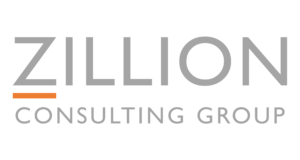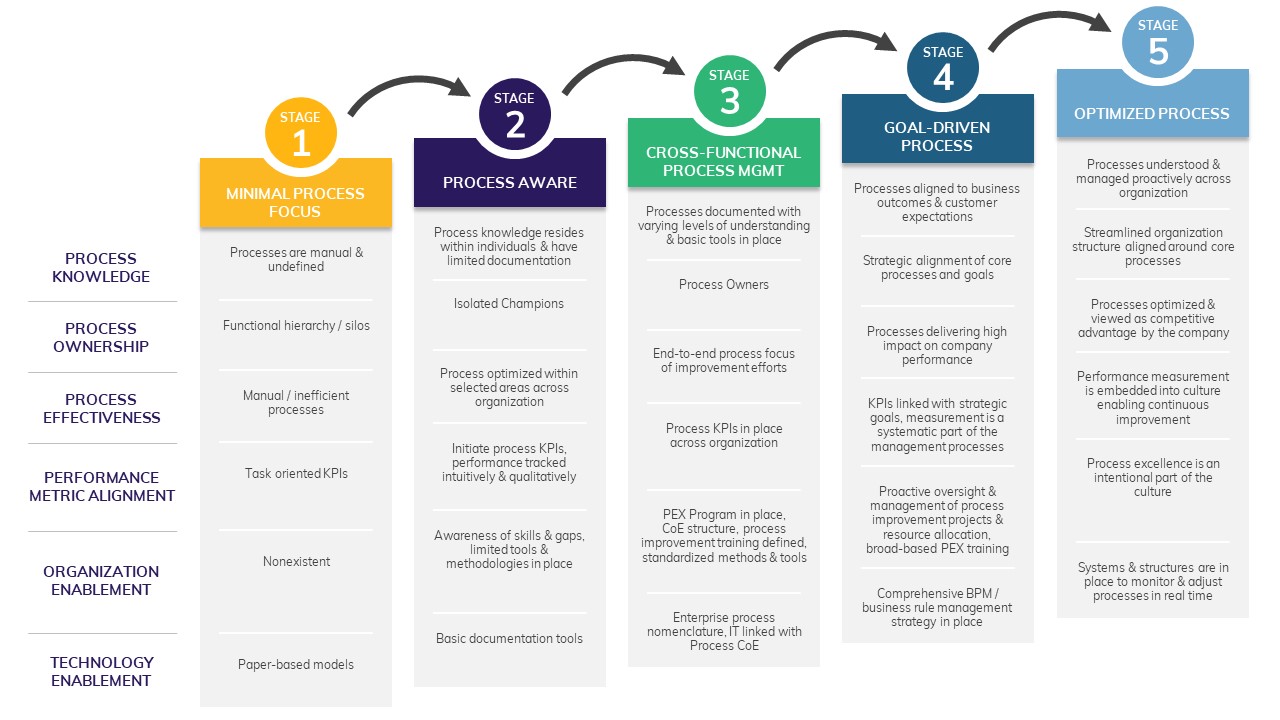Archives: Services
Service and services related data will be hold in this
Complexity Reduction
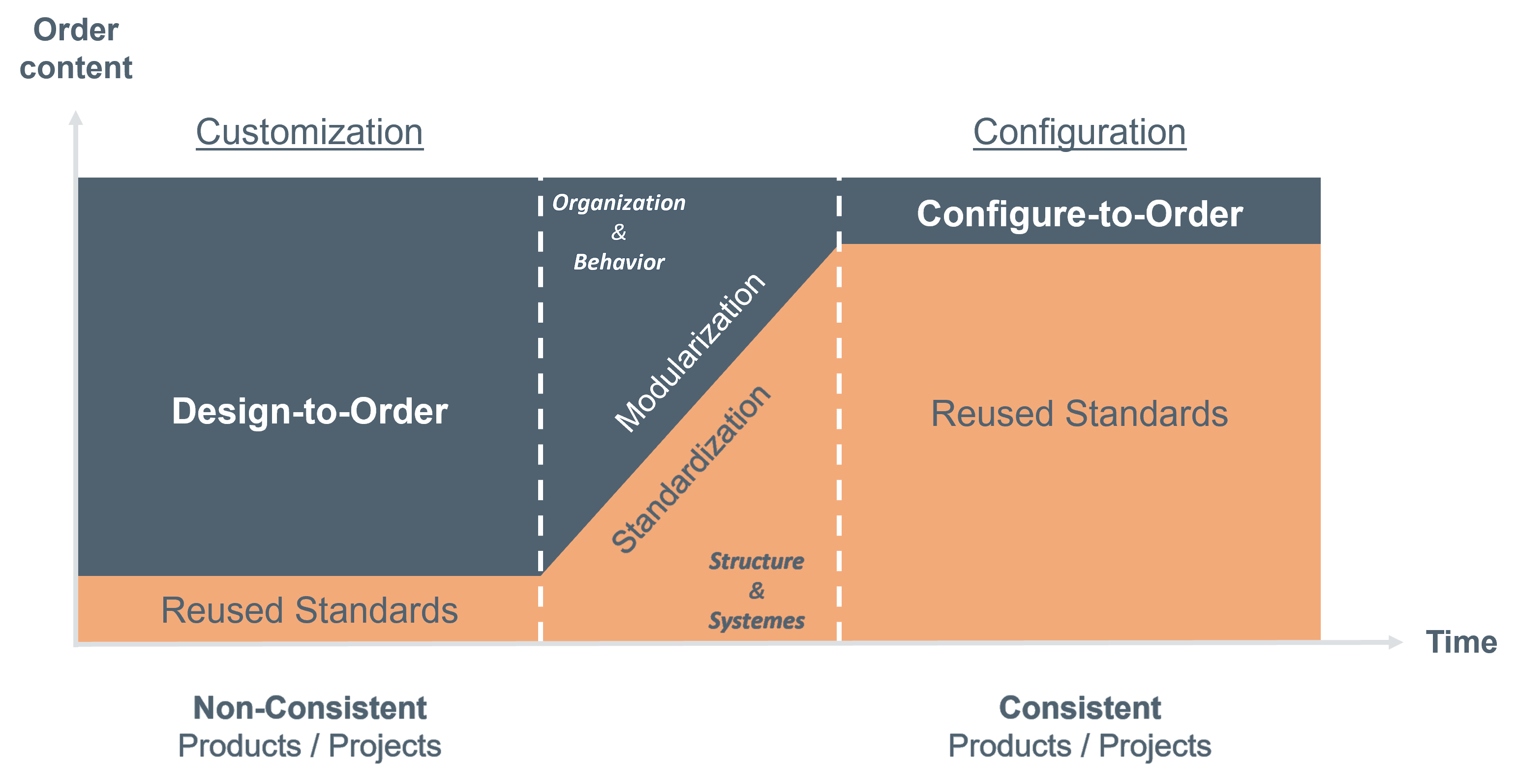
Process Excellence
ESG
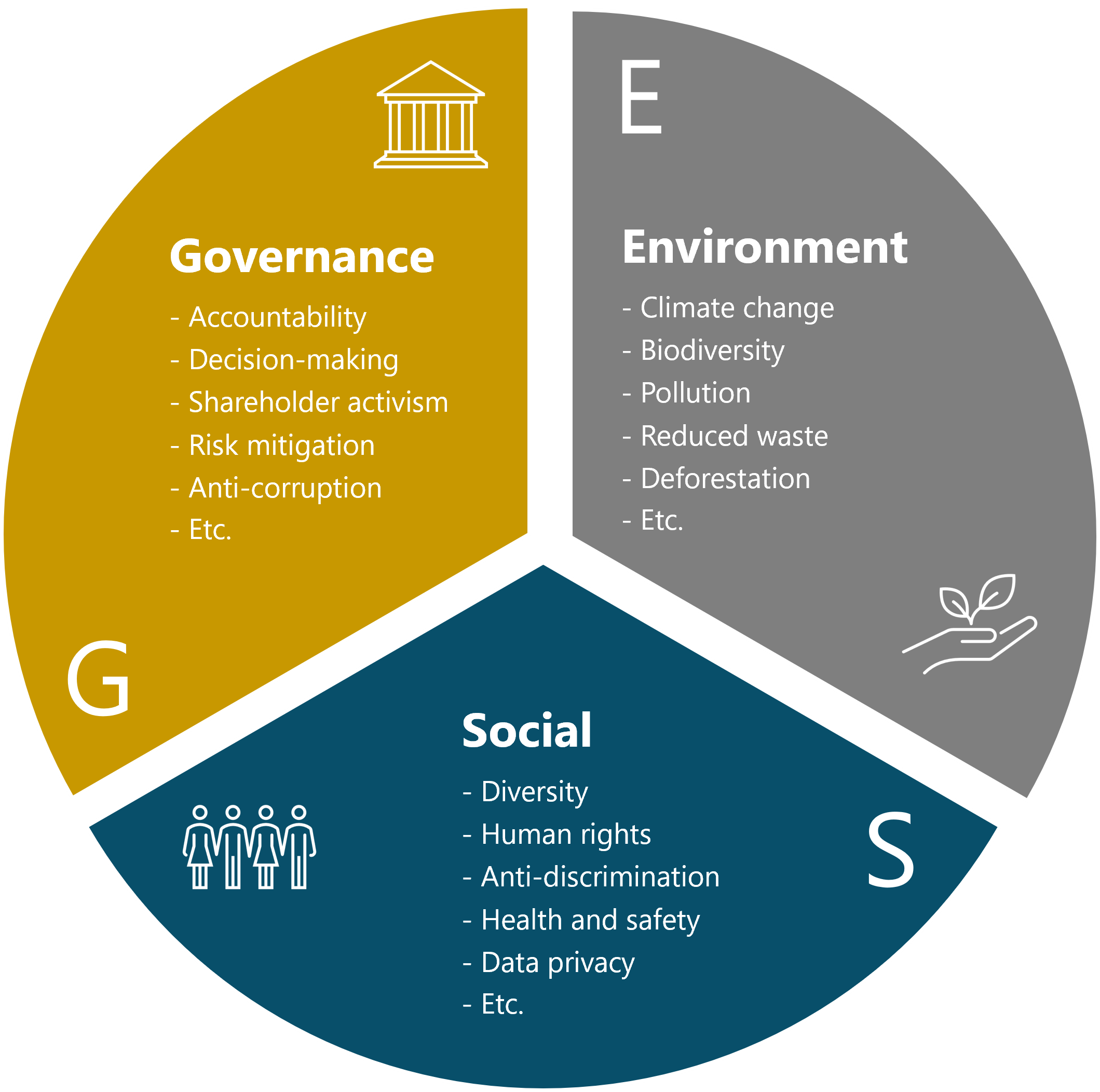
Maintenance & Spareparts
Automation & Industri 4.0
Operating System
One concept has effectively stood the test of time to solidify itself as being a corner stone to success. Management Systems.
Management culture, that sees & acts as a whole organization is essential for the business to grow together and as a consequence, create more value.
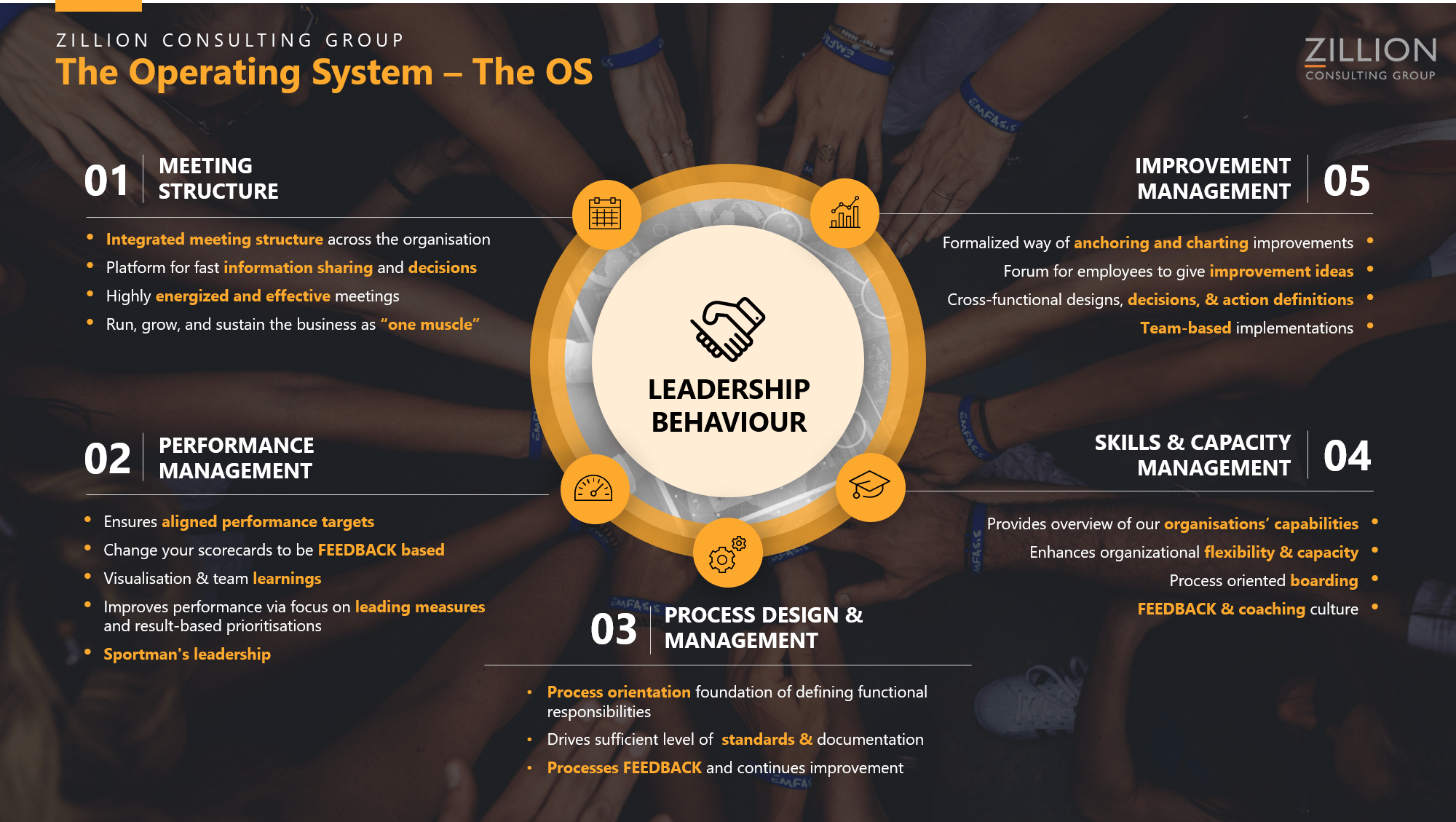
For an organization to become effective in management system a baseline needs to be established, which includes developing standardized structures for information & meetings across the whole business from top to bottom. These structures also serve as platforms for decision making, learning and importantly, sharing.
Performance targets should be aligned with the rest of the business and linked with leading measures, so decisions are made to improve overall performance. To ensure relevant stakeholders are informed it’s critical that visualization and feedback based on these measures are created.
Training leaders in the Operating System model is paramount for success as it requires a mindset, that is focused on the holistic perspective of the organization and the long-term results that it produces. The program is designed to instill this mindset, which will enable the leaders to manage for total effectiveness and value.
Typical deliveries connected to Management System with ZCG:
Offerings:
- Integrated meeting structure from CEO to shop floor.
- Integrated execution, improving, and sustaining the business into one muscle.
- Aligned and balanced KPI structures.
- Visualized measures brought to dialogue at all levels in the organization.
- Full process definitions, including process capability, flexibility, and competence level.
- Management scheme to ongoing confirm and improve process capabilities.
- Integrated capacity decision making, adopted into standard meeting structure at all levels.
- Integrate project models adopted into standard meetings.
- Next level management mindset programme, that help leaders being effective in using the Operating System model as their platform for long-term management.
Project Half Double
The half double project management method seeks to eliminate time wasted on output with no value and substantially increasing impact that delivers value to the business.With three core elements, Impact, Flow & Leadership, a new guideline for effective project management and execution can be achieved.
Traditional project management is focused on the outcome of the project rather than the impact or effect it has and is usually conducted with a linear non-agile methodology. This makes project execution slower when phased with the inevitable changes and uncertainty in the environment, which results in a costly and less productive project by end.
The half double simply turns traditional project management upside down and improves on time, cost and quality.
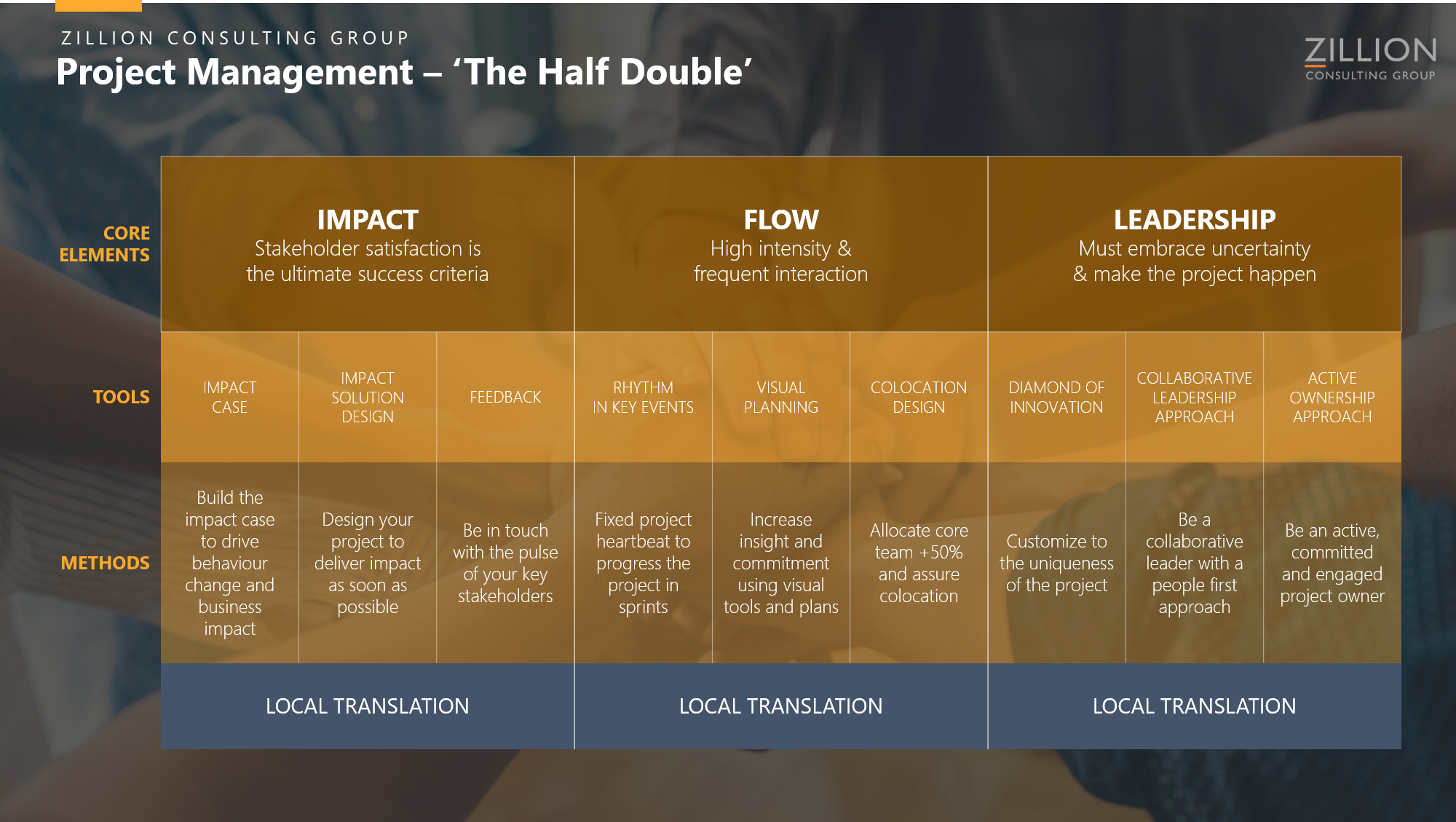
The three core elements for project management all have unique tools and methods, that when followed will ensure all stakeholders are aligned, committed and engaged.
Impact creation is the foundation for the project to become successful as it creates the platform, which stakeholders use as a reference for why, how and when tasks are completed.
By building the impact case it’s possible to drive changes within business and behavior, as stakeholders can see and understand the challenges ahead.
The project is designed around the case for early impact delivery, however, it’s important not to lose touch with key stakeholders as they are vital for the success of the entire project. Ensure continuous feedback, always.
Flow is required for effective performance as too much complexity and various halts in progress will reset the projects overall effectiveness.
By planning the project with flow in mind you should allocate core team and ensure colocation, so the team can solve complex issues without time or space being a hindrance. Furthermore, defining a project heartbeat will ensure stakeholder interaction can be planned alongside executing the project in sprints allowing early impact delivery.
Leadership ties the other elements together with a collaborative and people first approach, which ensures the project leader engages with its stakeholders to drive the project forward.
It is important that the project owner stays active, committed and engaged, while keeping a mindset of reflection and adaption. In short, embracing uncertainty and change while staying involved is the key to success.
Typical deliveries connected to Project management with ZCG:
- Identify mindset of organization to prepare for half double method
- Customized governance to ensure flow
- Reduced focus on deliverables and enhanced focus on effect
- Gain early value creation in project execution
- Continuous feedback of stakeholders to ensure satisfaction and development
- Focus on project progression and reduced optimization of resources
- Active leadership and involvement of project owners
- Project rhythm that creates energy, efficiency, quality and faster development
- Visualized project plan to demonstrate connectiveness of tasks
- Reflective and adaptive mindset of leadership
